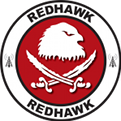Further Reading
The REDHAWK manual explains the use of REDHAWK to build, deploy, and manage data streaming applications. The principal REDHAWK features are outlined in the following sections, and a reference to the corresponding REDHAWK documentation is provided for further reading.
References for Application Developers
The following chapters are particularly useful for application developers:
Component development is introduced in Components. Greater detail related to component development is discussed in the following chapters:
Waveforms, including a demonstration of creating a REDHAWK waveform and launching it as an application using the IDE, are discussed in-depth in Waveforms
The sandbox, which is used to run components on a local host without any additional runtime infrastructure such as the Domain Manager, is described in-depth in Sandbox
References for System Developers
The following chapters are useful to system developers:
Managing and interacting with hardware through Devices
Devices and Device Managers make up individual nodes, which are used to deploy and manage devices in a REDHAWK system. Devices are used to determine whether or not a host can deploy any given component. Devices and Device Managers are discussed in-depth in Devices, Nodes, and The Runtime Environment.
The Domain Manager and Device Manager are the foundation for The Runtime Environment for the deployment of distributed applications. Runtime Environment Inspection describes additional tooling.
Services, are programs that provide some system-specific always-on software support to components. An example of a service is a web server.
 REDHAWK
REDHAWK